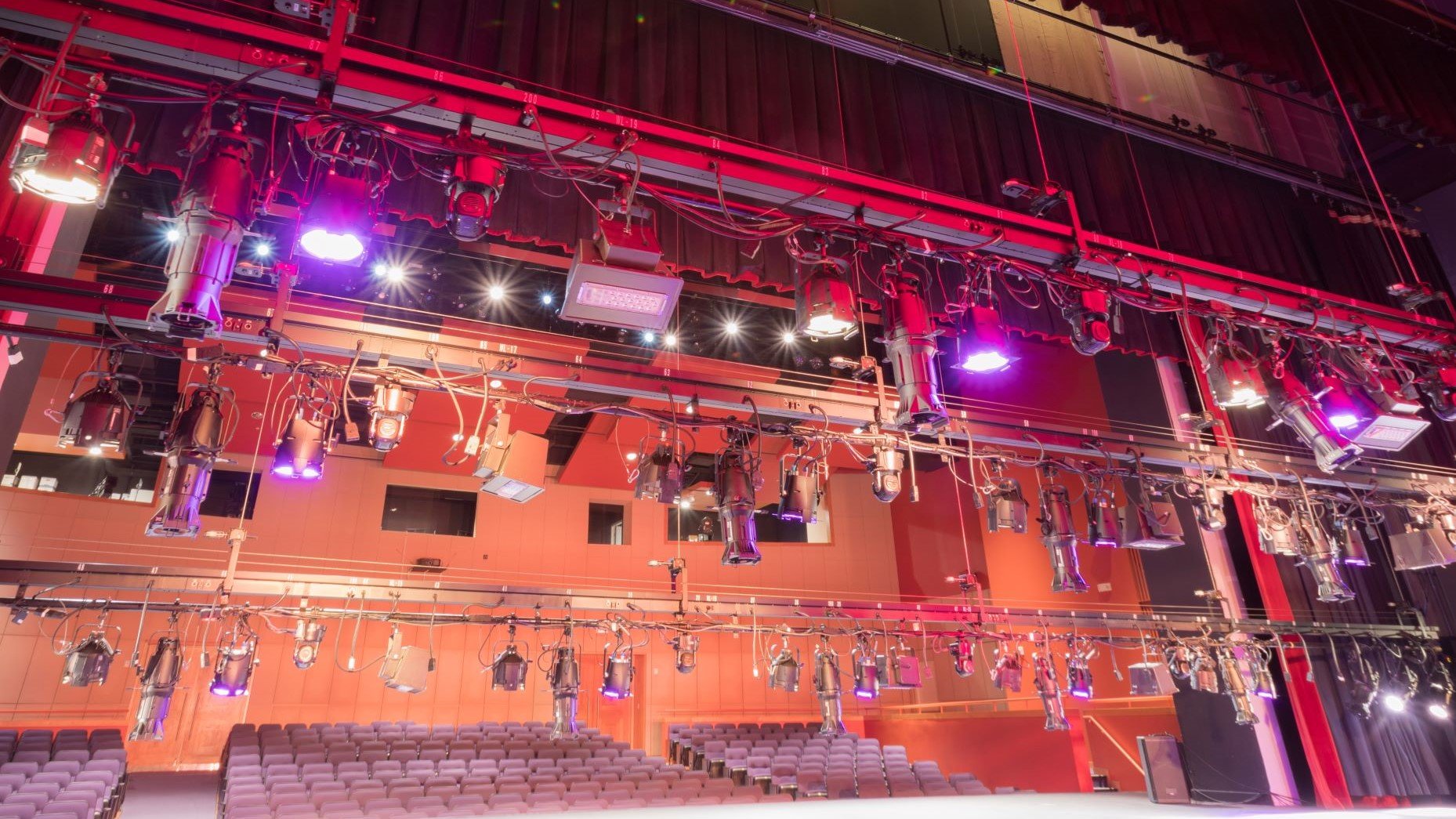Welcome back to our captivating series on stage lighting design! In this second installment, we'll explore the essential objectives of lighting design and how they work together to create a mesmerizing theatrical experience.
We started with the fundamentals in Part 1: Introduction to Lighting, in Part 2 we move on to breaking down the five main components of lighting design: visibility, revelation of form, composition, mood, and information. By the time you finish reading this post, you'll have a better understanding of what each of these components means and how they work together to create an unforgettable theatrical experience. So, sit back, relax, and get ready to further explore the fascinating world of stage lighting design!
Objectives of Lighting Design
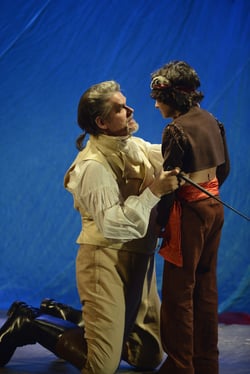 In the days of the ancient Greek amphitheatres, there was not much call for stage lighting. The sun was used as the lighting source for the plays that were being performed. The ancient Greeks understood the power of light and were able to use the sunlight to create dramatic effects. They would take into account the changing position of the sun as it moved through the sky, as well as its changing color – elements that we still control in our modern lighting designs. Over the years as theatre moved indoors, the sun was no longer a suitable light source. In the era of gas and flame, the primary objective was to provide general illumination for the performance. As this technology developed, different gases were mixed together to create different colored flames, and a complex series of valves allowed for some control of intensity. The advent of the electric light bulb led to stage lighting becoming more sophisticated. Simple illumination of the stage was no longer the only objective, and the early pioneers learned that lighting could add real drama and effect to the show and enhance the audience’s experience. Over the years, technology has constantly improved, but the basic objectives of lighting design have remained the same. We can break lighting design down into five main objectives:
In the days of the ancient Greek amphitheatres, there was not much call for stage lighting. The sun was used as the lighting source for the plays that were being performed. The ancient Greeks understood the power of light and were able to use the sunlight to create dramatic effects. They would take into account the changing position of the sun as it moved through the sky, as well as its changing color – elements that we still control in our modern lighting designs. Over the years as theatre moved indoors, the sun was no longer a suitable light source. In the era of gas and flame, the primary objective was to provide general illumination for the performance. As this technology developed, different gases were mixed together to create different colored flames, and a complex series of valves allowed for some control of intensity. The advent of the electric light bulb led to stage lighting becoming more sophisticated. Simple illumination of the stage was no longer the only objective, and the early pioneers learned that lighting could add real drama and effect to the show and enhance the audience’s experience. Over the years, technology has constantly improved, but the basic objectives of lighting design have remained the same. We can break lighting design down into five main objectives:
-
Visibility
-
Revelation of form
-
Composition
-
Mood
-
Information
Let’s take a look at each of these objectives in turn.
Visibility
 This is the primary objective of lighting design. We need to be able to see what is happening on stage. Our task is to ensure that there is enough light to see what is happening clearly but also to help guide the audience’s attention to the parts of the stage where the important action is taking place. Perhaps it is better to think of this in terms of “selective visibility” – you get to decide what the audience sees, when they see it, and, more importantly – how they see it. When you are planning your lighting, think about the dramatic moments in the play and how you can draw the audience’s attention to those moments to make sure they do not miss them.
This is the primary objective of lighting design. We need to be able to see what is happening on stage. Our task is to ensure that there is enough light to see what is happening clearly but also to help guide the audience’s attention to the parts of the stage where the important action is taking place. Perhaps it is better to think of this in terms of “selective visibility” – you get to decide what the audience sees, when they see it, and, more importantly – how they see it. When you are planning your lighting, think about the dramatic moments in the play and how you can draw the audience’s attention to those moments to make sure they do not miss them.
When we refer to visibility, we are talking about being able to see the actors’ faces, especially their eyes.
Any light that we use on stage will lead to a certain degree of visibility, but in the context of our main objectives, being able to see the actor’s face is what is important.
Ensuring that there is sufficient front light is essential in achieving this objective. Of course, it is not essential that you see all the faces all of the time – there may well be moments when you want to close the scene down and create dramatic effects where people are intentionally placed in shadows and silhouettes are created, but these moments should be used sparingly and created thoughtfully.
Revelation of form
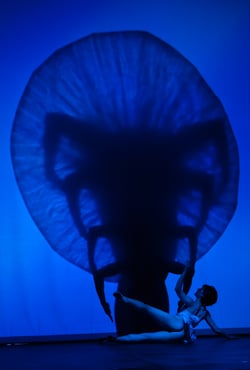 It is not enough to simply “light the stage.” While visibility is important, we must ensure that we make the actors (and scenery and costumes) look as good as they possibly can. With well-designed lighting, we can make them look even better than they actually are! Revelation of form basically means “introducing shadow.” By introducing shadow, we create three-dimensional objects on stage.
It is not enough to simply “light the stage.” While visibility is important, we must ensure that we make the actors (and scenery and costumes) look as good as they possibly can. With well-designed lighting, we can make them look even better than they actually are! Revelation of form basically means “introducing shadow.” By introducing shadow, we create three-dimensional objects on stage.
Without shadow, things can look very flat and two-dimensional on stage. The shadows you introduce do not have to be black – by adding color to them, you create more visual interest.
Shadows can also help tell a different story. Keeping actors in deliberate shadow can create intrigue and mystery.
Composition
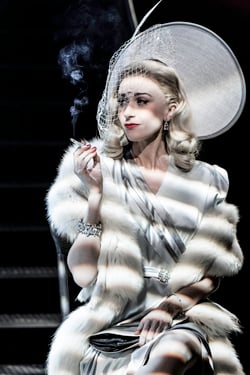 Just as the director or choreographer are creating visual pictures with the actors, the lighting designer is responsible for creating beautiful compositions without compromising on the first two objectives. Most lighting rigs tend to be symmetrical, with evenly spaced lights often mirrored about center. Symmetry tends to be aesthetically pleasing, so by placing your lights carefully it is easier to create pleasing compositions.
Just as the director or choreographer are creating visual pictures with the actors, the lighting designer is responsible for creating beautiful compositions without compromising on the first two objectives. Most lighting rigs tend to be symmetrical, with evenly spaced lights often mirrored about center. Symmetry tends to be aesthetically pleasing, so by placing your lights carefully it is easier to create pleasing compositions.
It is relatively easy to create striking stage pictures by lighting with bold colors and dazzling beams, or glorious rich sunsets, but we should be careful that we do not sacrifice visibility to achieve them.
Mood
Part of the subliminal magic of lighting is setting the mood of a particular moment during a play. Is the scene a happy or sad one? Is it a cheerful sunrise, or a somber afternoon? Simple adjustments to color or intensity can go a long way to help you set the right mood. Warm-toned light tends to suggest happier themes while cool tones tend to support sadder ones.
Information (Scene Setting)
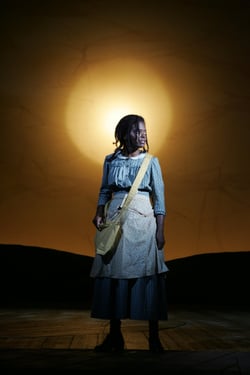 Lighting design is about telling stories and helping the audience understand the play. Theatre is all about creating “suspended disbelief” and helping the audience buy into the idea that we are not actually in a theatre, but in the world that we are representing on stage. Sometimes, a simple projection of a window (when there isn’t actually a window on stage) is a great way to tell the audience where we are.
Lighting design is about telling stories and helping the audience understand the play. Theatre is all about creating “suspended disbelief” and helping the audience buy into the idea that we are not actually in a theatre, but in the world that we are representing on stage. Sometimes, a simple projection of a window (when there isn’t actually a window on stage) is a great way to tell the audience where we are.
Lighting can be used to tell the audience about the location and the time of day.
Lighting can help suggest:
- Interior spaces
- Exterior spaces (Forest, City)
- Time of day (Early morning, Afternoon, Evening, Night)
- Season
We will discuss these objectives in a little more detail in future installments. Remember that it may not be possible (or applicable) to achieve all the objectives all the time in all your cues, but they should be your starting point when you are thinking about the lighting for your show.
For more info on lighting design principles, check out ETC’s Making the Light Fantastic video series.
If you found this information helpful, don't miss our blog series dedicated to the art of stage lighting design, right here:
Stage Lighting Design, Part 1: Introduction to Lighting
Stage Lighting Design, Part 2: Objectives of Lighting Design
Stage Lighting Design, Part 3: Controllable Properties of Light
Stage Lighting Design, Part 4: Types of Lights
Stage Lighting Design, Part 5: Lighting Angles
Stage Lighting Design, Part 6: Color
Stage Lighting Design, Part 7: Lighting Systems
Stage Lighting Design, Part 8: Planning Your Design
Stage Lighting Design, Part 9: Getting Technical
Stage Lighting Design: Glossary
This blog series is an adaptation of our free digital guide, Stage Lighting Design: An Introduction, based on content written by ETC Outreach and Training Specialist, Declan Randall.
In this post, we've delved into the essential objectives of lighting design with the help of the ETC e-book Stage Lighting Design: An Introduction. Head over to our website to access the complete guide and an accompanying set of posters, all available for free download!
Image details, in order of appearance:
Zorro Alliance Theater, Atlanta, credit: Greg Mooney
The Color Purple
Shadowland, Pilobolous, credit: Emmanuel Donny
City of Angels Donmar Warehouse, London, credit: Johan Persson
The Color Purple


